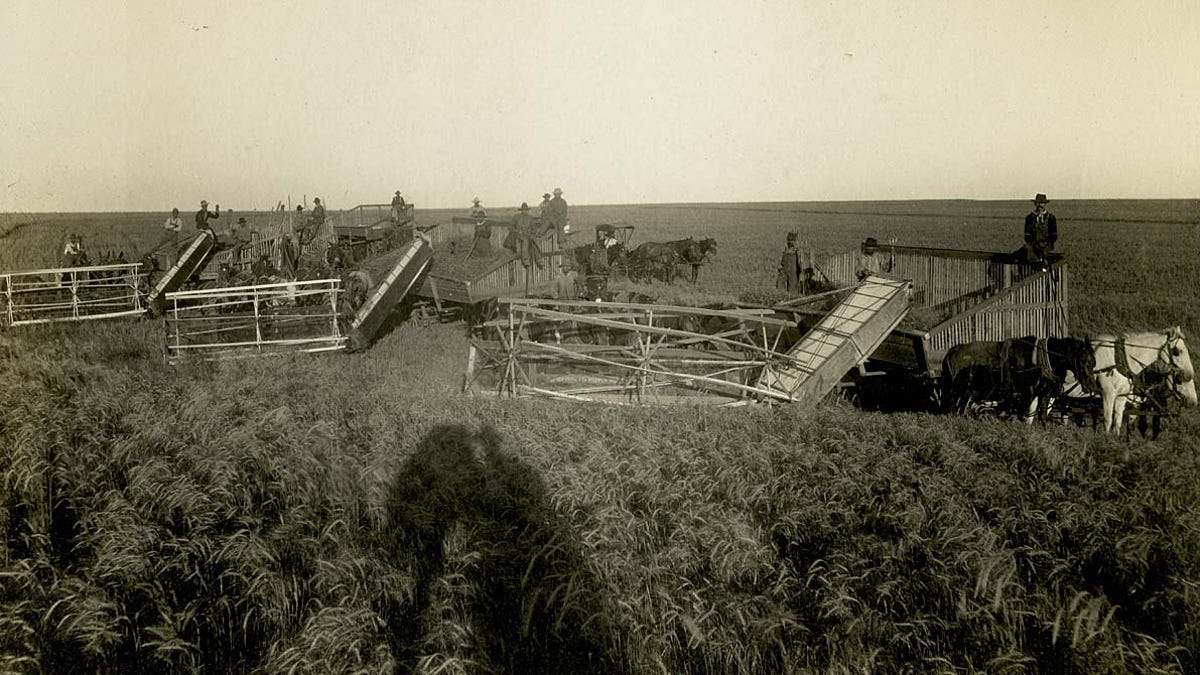
As we travel across the state, we see crops growing in the fields, which vary depending upon the time of year.
Most of us pay little notice, but farmers will often slow down to study them and possibly compare them to the crops growing in their own fields.
However, hardly anyone thinks about the origins of Kansas's most popular farm products.
Soybeans did not originate from around here. They are native to East Asia.
Today, only 45 percent of the crop is grown there, with the other 55 percent grown in the Americas. Soybeans were introduced in what is now the United States in 1765, but were not important in the U.S. until about 1910.
The beans are excellent at fixing nitrogen in the soil and can be grown in a wide variety of soils. For these reasons, the growing of soybeans became prevalent during the 1930s “Dust Bowl” in drought stricken areas, including Kansas, as a means of rejuvenating the soil.
At the same time, the Great Depression was in full force. Henry Ford and the Ford Motor Company were instrumental in helping farmers during these hardships by funding soybean research and using soy products in the manufacture of automobiles.
The origins of corn are much closer to home. Corn was adapted from wild grasses by Native Americans in what is now Mexico. Referred to as “maize,” its cultivation by the American Indians spread throughout North American, including Kansas.
Columbus brought corn to Europe in the 1490s, and by 1575 it had spread throughout Europe and into eastern Asia.
When the first settlers arrived in Kansas, they grew corn which was familiar to them.
During harvest a corn binder cut, gathered, and tied the corn stalks in a bundle; which they gathered into “shocks” that stood in the field to dry.
Corn did well in eastern Kansas, but the climate was too dry in western Kansas for it to succeed. It wasn’t until modern irrigation techniques were introduced that farmers grew it in this part of the state.
Western Kansas has an environment much better for growing wheat than for corn. The production of wheat in this area took off when German Mennonites emigrated from Russia in the 1870s.
In 1874, locusts destroyed most of the corn crop, spring wheat did not fare well in this climate, and the soft winter wheat was vulnerable to winter kill and rust. It was the hard winter wheat introduced by the Mennonites which thrived in much of Kansas. Wheat is still the predominate crop in southwest Kansas, but statewide corn has replaced wheat as Kansas’ top producing crop.
In the early farming days, the harvesting process used a horse-drawn binder which cut the wheat stalks and gathered them into shocks. With the introduction of the internal combustion engines, tractors replaced horses.
The shocks were stacked into windrows to dry and a threshing machine separated the wheat kernels from the straw stalks. Combines, which were popularized after World War I, further increased wheat production in the “Wheat State.”
Milo or grain sorghum is unfamiliar to those living outside the Great Plains. Native to Asia and Africa, African Slaves introduced grain sorghum to North America in the early 17th century. Today it is grown from Texas to South Dakota and concentrated in Kansas.
Flourishing in hot and dry climates, it is better suited to our area than corn.
Though worldwide milo is primarily consumed by humans, in the U.S. it is used mainly for animal feed. It also grown to produce ethanol.
The Link LonkDecember 28, 2020 at 11:16PM
https://ift.tt/3aLQI6H
Historically Speaking: Grains of the Great Plains - Dodge City Daily Globe
https://ift.tt/3gguREe
Corn

No comments:
Post a Comment